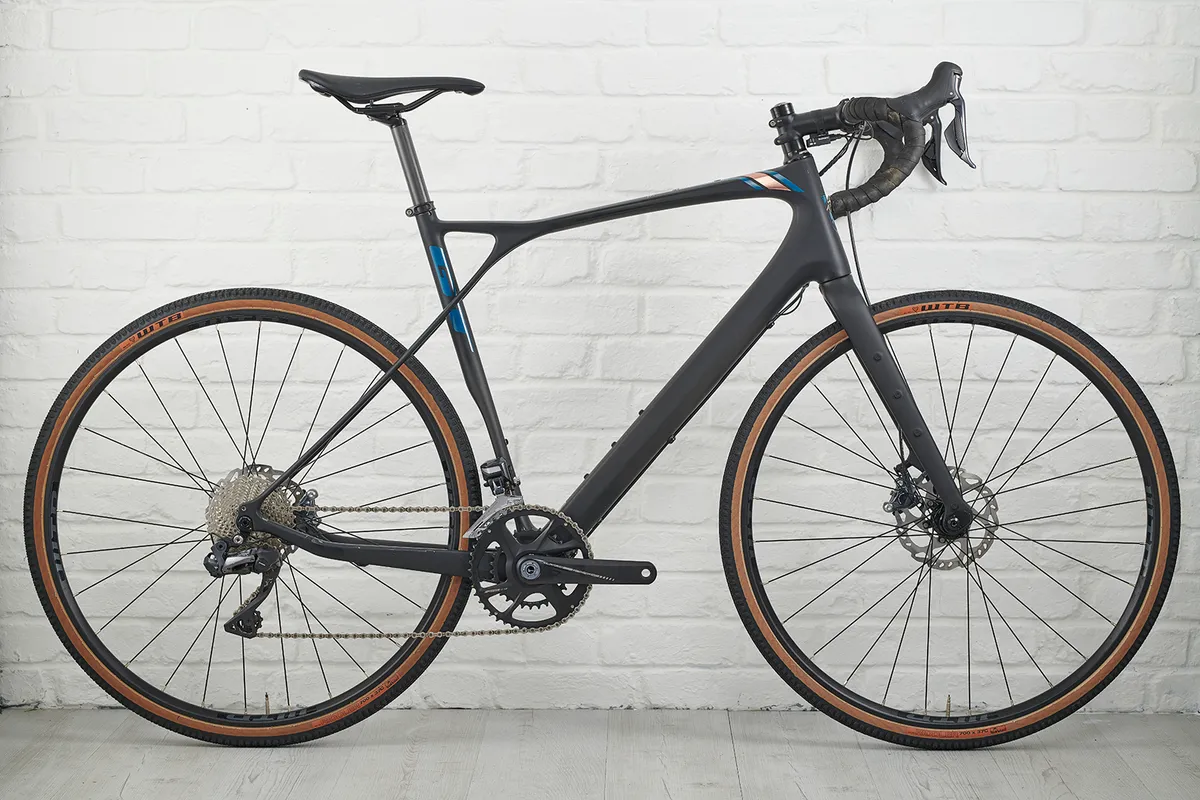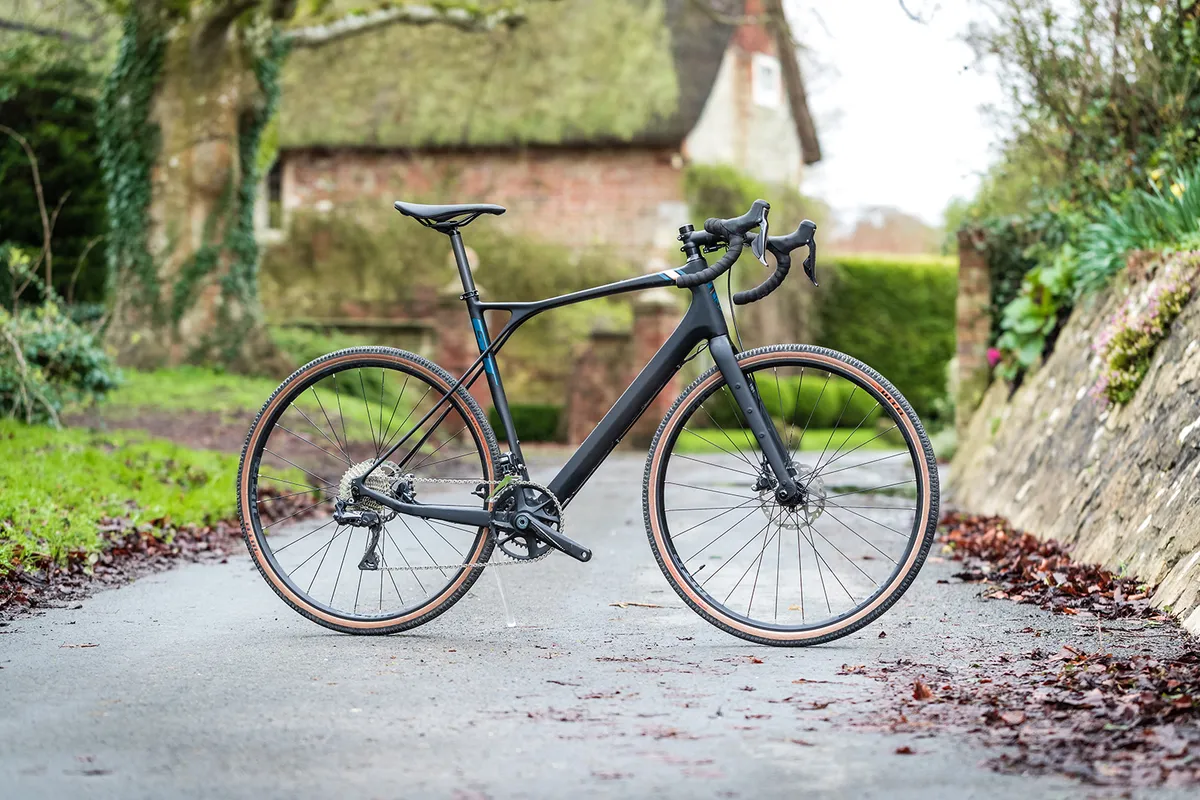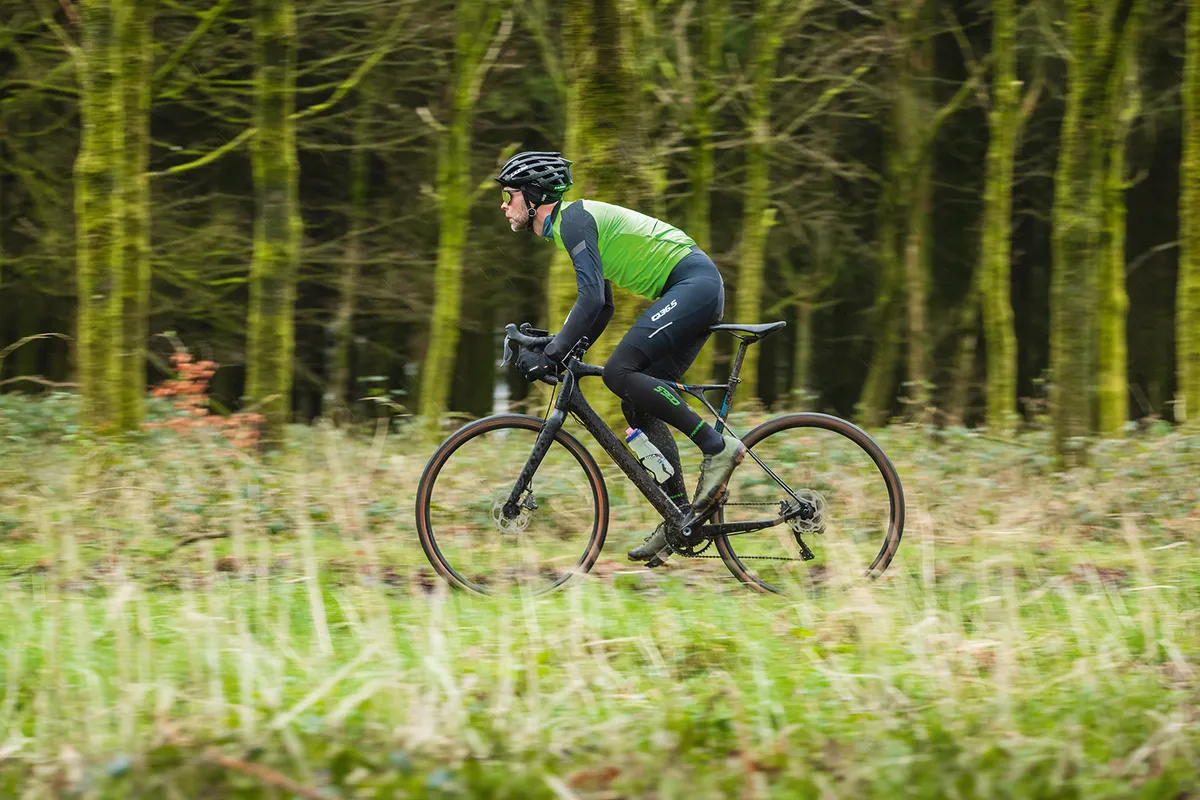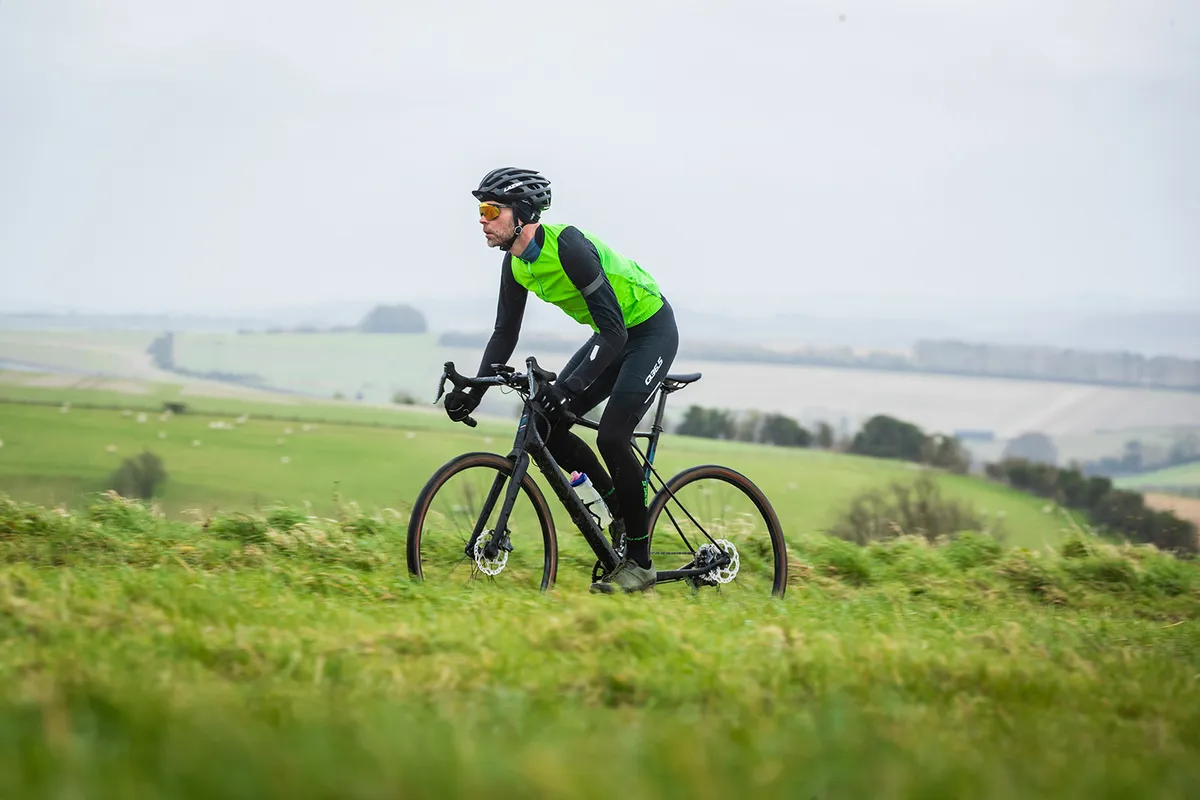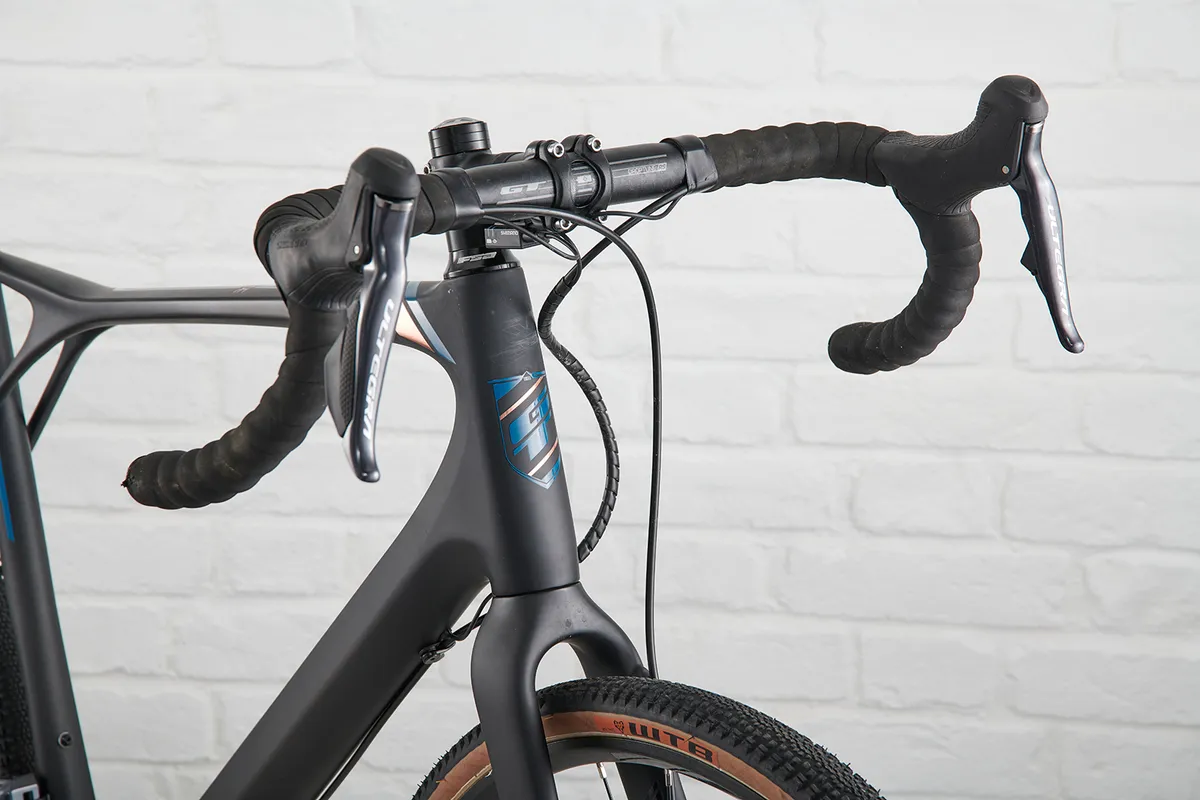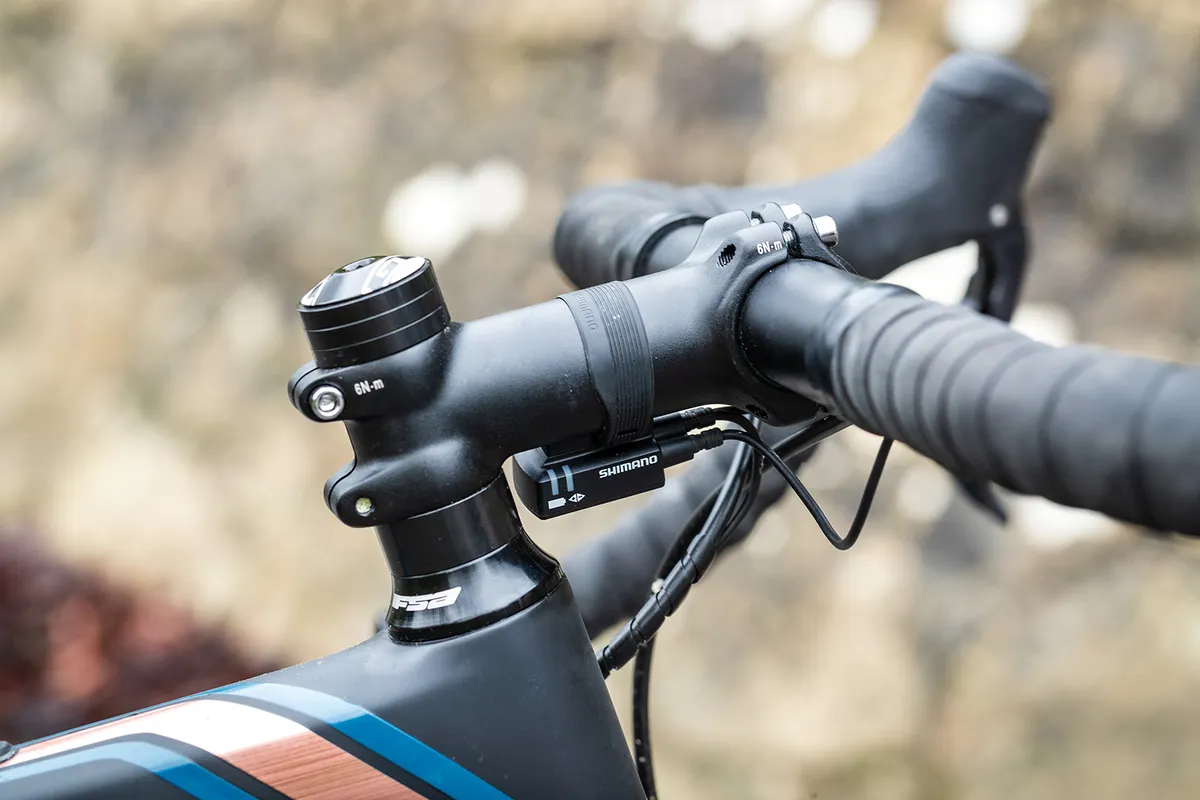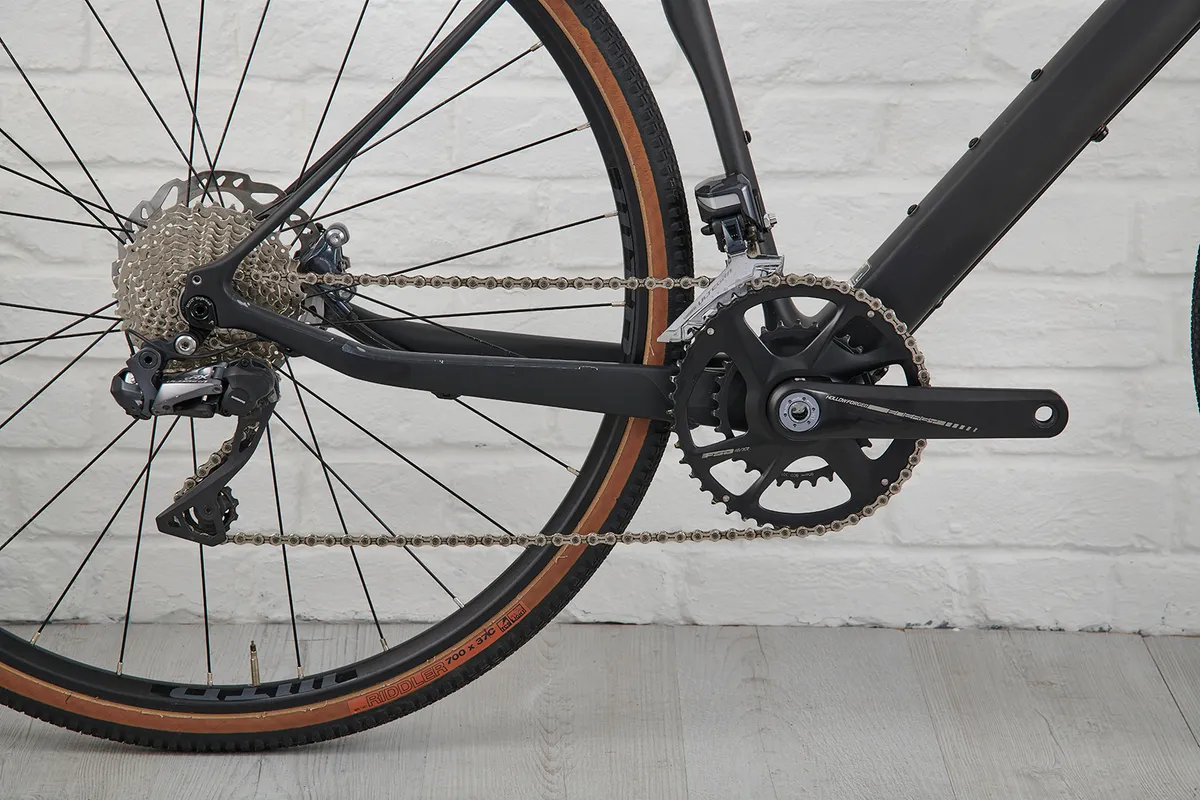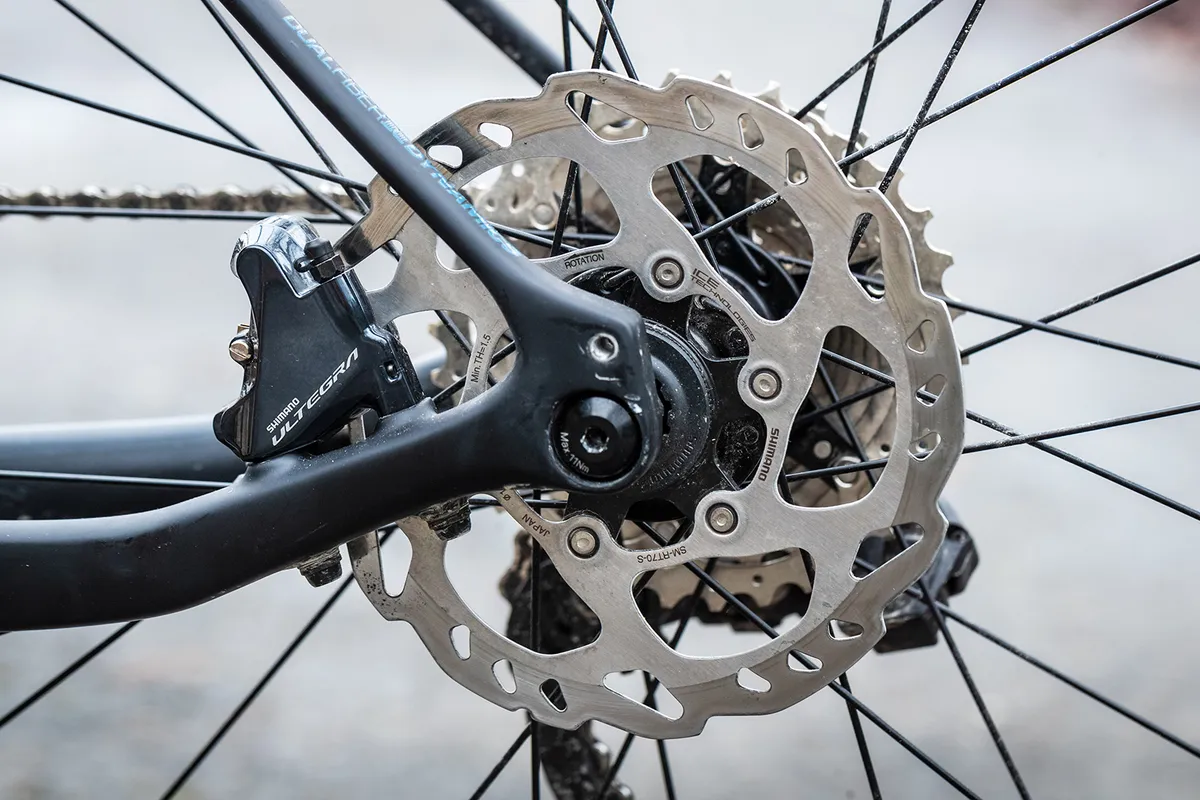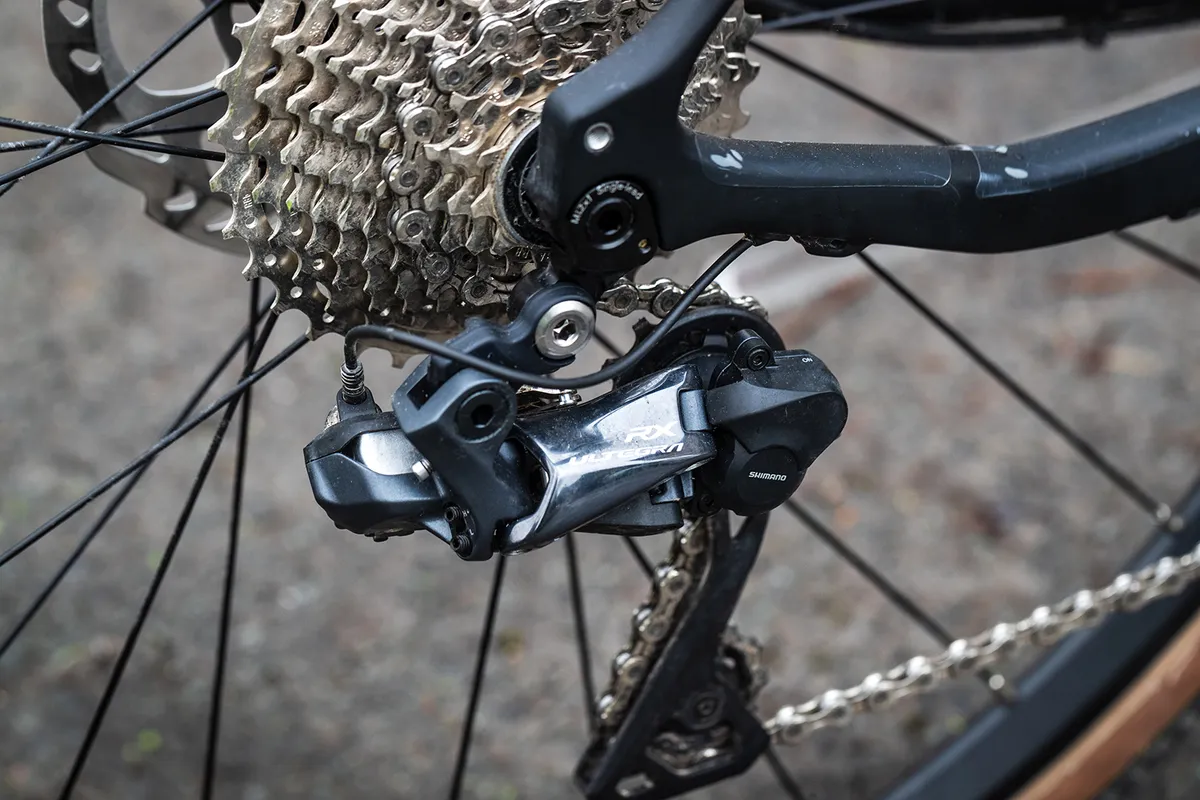GT’s original Grade was one of the earliest ‘gravel’ bikes from a major manufacturer and was a key player in making this new genre of bike as popular as it is today.
On its launch we loved the Grade, awarding it best debut in 2015’s Bike of the Year awards, and for 2020 it's taken the top spot in our gravel category.
The original Grade took three years of development, from conception to prototype and development. Initially the team at GT had identified a trend away from traditional race machines with the shift to a more comfortable ride and a more comfortable position.
The bike was designed for adventure, and to be raced at a gran fondo, yet still get off the beaten track to ride dirt roads and gravel aided by the large volume tyres and disc brakes.
Bike of the Year 2020
The GT Grade Carbon Pro is part of our annual Bike of the Year test and our Gravel Bike of the Year winner.
Head to our Bike of the Year hub for the full list of winners, categories and shortlisted bikes, as well as the latest reviews – or read our behind-the-scenes feature on how we tested Bike of the Year 2020.
GT Grade Carbon Pro frame
The latest Grade has been in development for four years, and although it shares a similar silhouette to the original it has lost some weight, has slightly more aggressive geometry and has gained the all important tyre clearance needed for the current trend for dual wheel size compatibility.
Its back end is so compliant and comfortable you’ll find yourself looking for a pivot like on Cannondale’s Topstone or a decoupler on Trek’s Domane. Here, however, it comes from something much simpler (and lighter) and that’s its ‘floating seatstays’.
GT’s signature design is its triple triangle – which featured on its mountain bikes for decades and on its road bikes back in the nineties, such as the beautiful titanium Edge ridden by Lotto – the small triangle created by the seatstays overlapping the seat tube and meeting the top tube away from the junction.
It's present on the new GT Grade, but there's a difference, with its long, low dropped seatstays no longer bonded (or welded on the alloy models) to the seat tube.
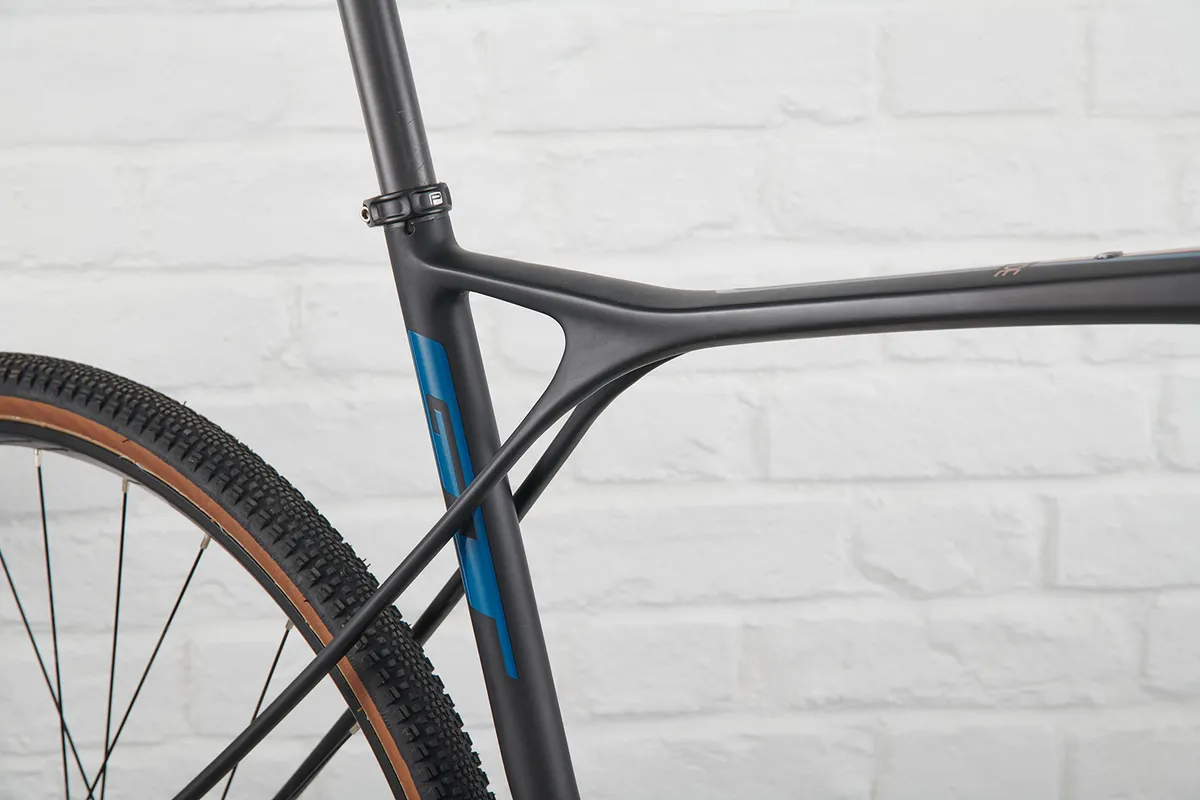
In the development of the new bike, GT’s engineers found that by leaving the stays unbound by the seat tube they were able to increase compliance greatly through both the seatstays and the seat tube.
Both of these frame elements have some smart design at work. First up, the seatstays are the thinnest you’ll see on any current production carbon bike. Like the first Grade, these are solid in construction, not a hollow tube like most carbon tubes, but the technology is called DFD tech and it combines glass-fibres with carbon.
The glass-fibre rods used in the stays have a similar strength to carbon, but with a far lower modulus, and they flex far more freely than usually stiff carbon – think fishing rod flexible rather than stiff frame tube.
These glass-fibre stays are finished with a final carbon layer to add impact resistance. The amount of deflection created was in excess of 10mm in just the frame on the original Grade, but on this new frame it’s even greater.
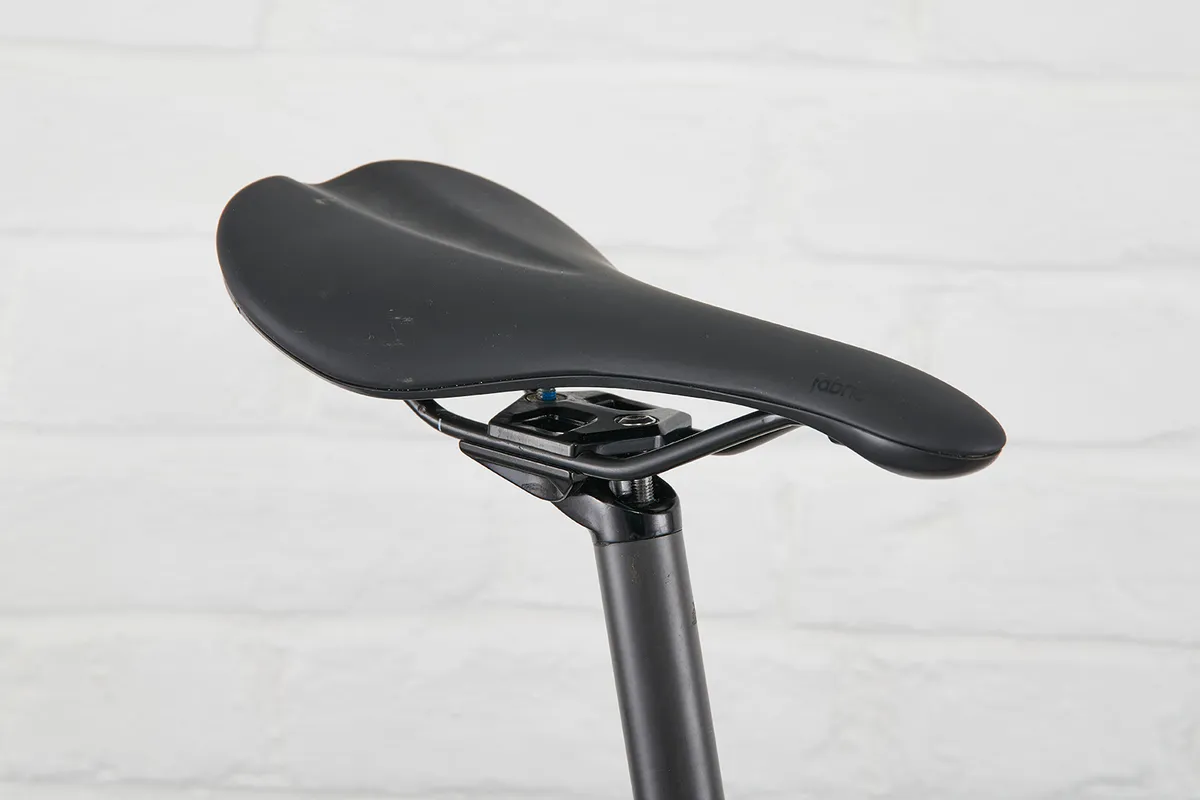
When combined with the seat tube, which is designed with a bi-directional taper at the bottom bracket (BB), this basically means that the tube turns from a tube into a flattened section that looks a little like a leaf spring.
This shape means the tube acts more like a hinge, allowing for more fore-aft movement, while the massive down tube and oversized chainstays and BB ensure that drivetrain stiffness is maintained.
The final component of the flexi-comfort design is the top tube, with its flat, broad, yet shallow shape, which restricts the amount of lateral movement while the shallow depth is designed to allow the top tube to flex.
Combined with the downward kink in the top tube at the joint, where seatstays and top tube meet, this tube flexes by arching upwards following the same path as the seatstays – it’s like the kinked top-tube is trying to straighten as the frame moves.
The smart frame design and its simplicity keep the GT Grade frame weight down to a very impressive 980g – that’s road bike territory, not gravel.
It’s all the more impressive when you consider that the frame's dimensions can carry a 42c tyre in 700c and a huge 47c in 650b.
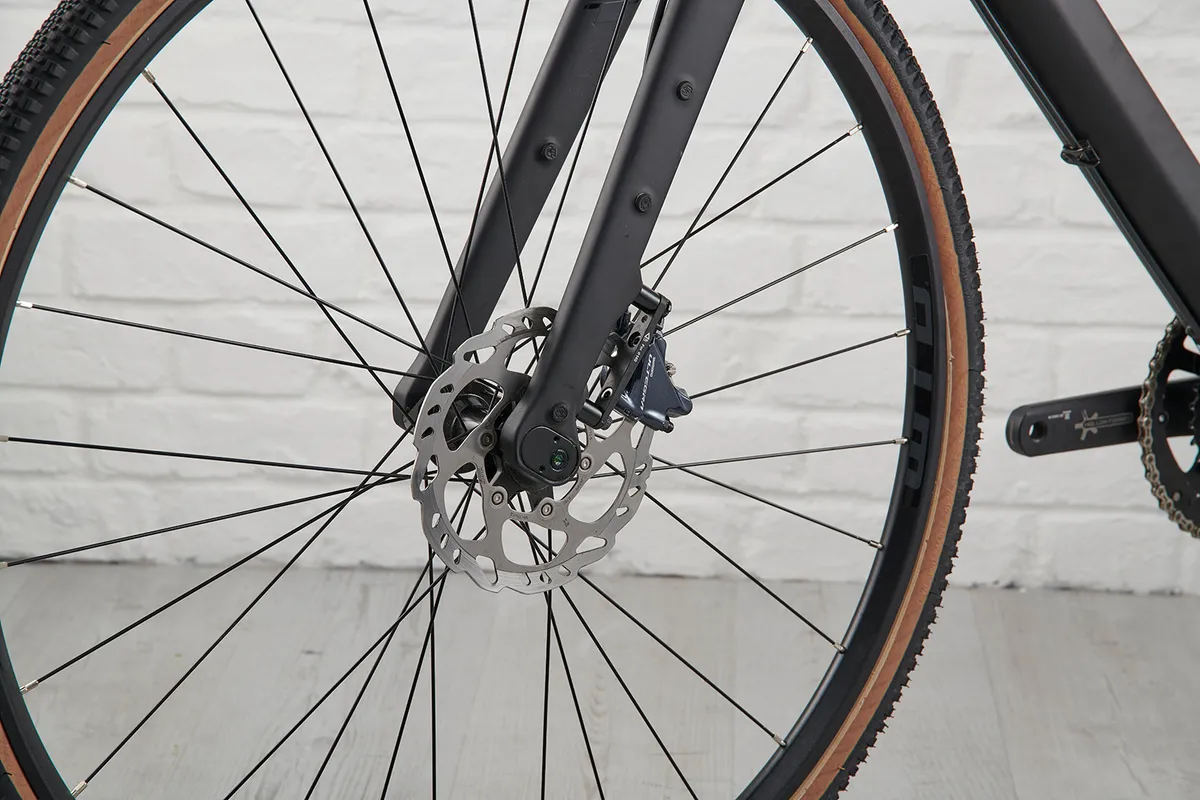
GT Grade Carbon Pro fork
GT has one more trick up its sleeve in the fork. The fork on this Pro carbon model has an insert at the axle that you can flip.
If that sounds familiar, you may recognise a similar design used on last year's Bike of the Year winner the Rondo HVRT.
Both employ a flip-able chip at the fork dropout, but where the Rondo employs its chip in a more vertical plane, to enable you to alter the ride position between race and endurance (the Rondo’s adjustment has more of an effect on the stack/reach/head angle), the Grade’s chip is laid in a much more horizontal plane.
This means the chip has little effect on the ride position and a larger effect on the fork’s trail (the position of the wheels' contact points relative to the handlebar, think of it as the contact patch that’s ‘trailing’ behind the steering axis). The chip shifts the offset between a pretty standard 55mm down to a short 40mm, changing the trail.
GT tells us the reason behind this was to make the front end nimbler to counter the effect of weight when riding the bike fully loaded with bikepacking bags.
GT Grade Carbon Pro geometry
- Seat angle: 73 degrees
- Head angle: 72.3 degrees
- Chainstay: 43cm
- Seat tube: 56.8cm
- Top tube: 58.7cm
- Head tube: 18.7cm
- Bottom bracket drop: 7cm
- Bottom bracket height: 28.9cm
- Wheelbase: 1,055mm
- Stack: 61.2cm
- Reach: 40cm
The GT’s ride position, like its frame weight, is very much in the road bike arena, with an endurance bike-like 612mm stack and 400mm reach on my large test bike.
The sporty ride position translates to a bike that’s completely at home when the going gets rough. On gravel it’s a bike that pings off of undulations, maintaining comfort while still feeling super lively.
I found myself actively looking for things to launch off when riding the Grade, trying to get the wheels off the ground at every opportunity. When it comes to the tighter more technical stuff the GT really wants to play.
GT Grade Carbon Pro kit
The Grade comes with what’s fast becoming called ‘adventure’ gearing, so that’s a sub-compact 2x system combining a 46/30 chainset with a wide 11-34 cassette.
GT has opted for a Di2 setup on its premium Grade, which means you get predominantly Ultegra components with a switch to the clutch-equipped Ultegra RX mech at the back.
The clutch mechanism allows the spring in the derailleur to be almost locked-out, which prevents it bouncing the chain and potentially dropping it when riding over truly rough terrain. So the shifting is crisp and accurate, and the drivetrain doesn’t get noisy when it gets choppy – all good stuff.
The cranks come from FSA with its modular Energy crankset and direct-mount rings, but aside from the finish looking different from the Ultegra units they replace, performance and shifting are pretty equal.
I’d expect that later models of GT’s premium Grade will switch over to Shimano’s gravel-specific GRX components rather than this more mix and match approach.
I thought the 46/30, 11-34 would be a bit spinny on the road, but thankfully that’s not the case and I’d rather have the gears to keep rolling in the rough than have ultimate top-end speed on tarmac.
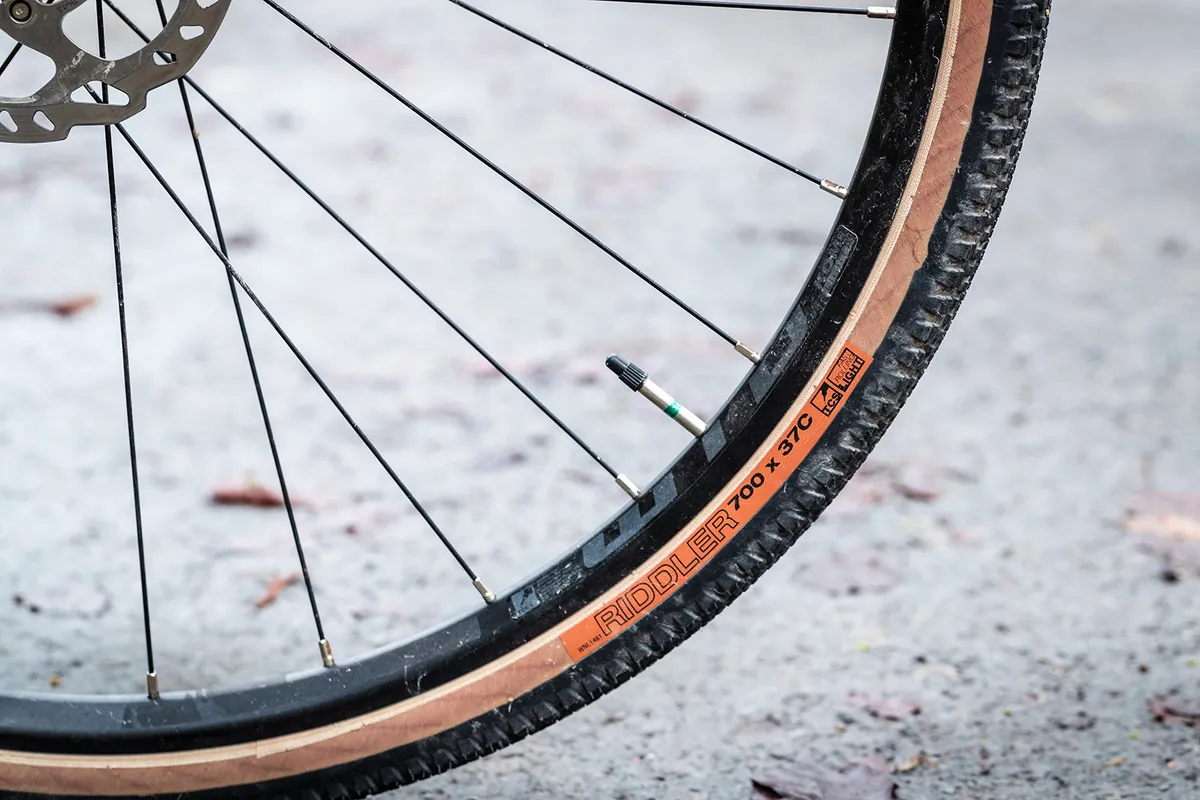
My one criticism of the Grade comes from the tyres. The 37c Riddler’s roll well on tarmac, which is still important for a gravel bike that spends time on the road between off-road jaunts, but off the tarmac and set-up as standard with tubes they’ve proven to be somewhat fragile and notched up a fair few punctures.
A switch to tubeless improved things measurably – both the WTB KOM rims and WTB tyres are tubeless ready.
So, if you’re tempted by the Grade, it's worth asking your dealer to ready them tubeless before you buy because having a wider range of tyre pressure adjustment helps prevent pinch punctures and punctures in general.
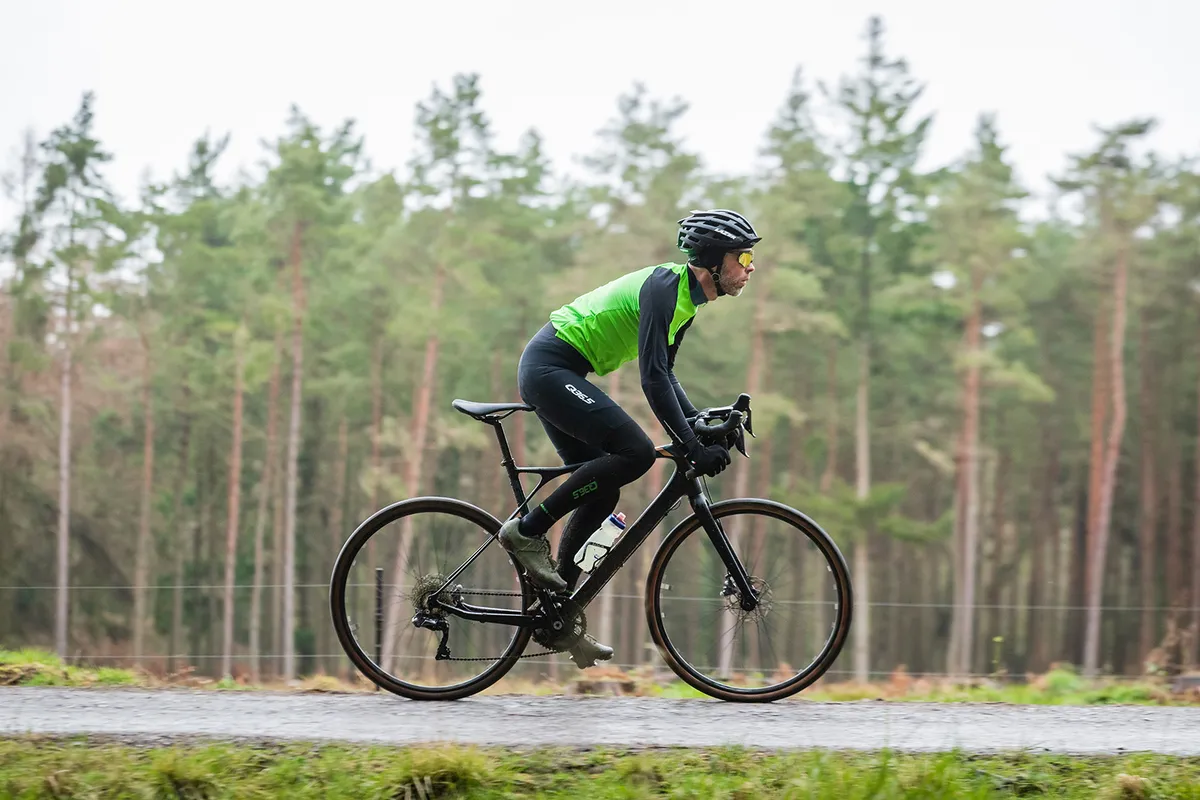
That said, the GT will win hearts all over. It's a bike that’s comfortable and compliant, and the fast handling is controlled yet chaotic.
It’s a bike that takes you back to your childhood, when blasting around the woods and finding things to flick between, jump off and drop off was the order of the day.
Product
| Brand | gt |
| Price | 3799.00 EUR,3500.00 GBP,3900.00 USD |
| Weight | 9.0900, KILOGRAM (58cm) - |
Features
| Fork | All-New Grade Carbon fork |
| br_stem | GT Design 3D forged 6061 |
| br_chain | KMC X11, 11-speed |
| br_frame | All New Grade Carbon |
| Tyres | WTB Riddler 37c tyres |
| br_brakes | Shimano Ultegra hydro disc, 160/160mm RT70 rotors |
| br_cranks | FSA Energy Modular Adventure, 46/30 |
| br_saddle | Fabric Scoop Shallow Elite, cr-mo rails |
| br_wheels | WTB KOM Light i23 TCS, 28h, tubeless ready |
| br_headset | FSA NO. 44, Integrated |
| br_shifter | Shimano Ultegra Di2 hydro disc, 2x11 |
| br_cassette | Shimano 105, 11-34, 11-speed |
| br_seatpost | Fabric Scoop Shallow Elite, cr-mo rails |
| br_handlebar | GT DropTune Super Light, double butted 6061 alloy |
| br_bottomBracket | FSA PressFit 30 |
| br_availableSizes | 48, 51, 55, 58, 61cm |
| br_rearDerailleur | Shimano Ultegra RX 805 Di2 |
| br_frontDerailleur | Shimano Ultegra Di2, braze-on |
